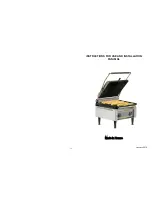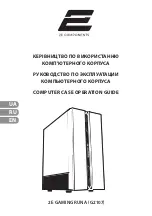
Technical Publication
Using Calor Gas Safely
– Patio Gas
Page 2 of 4
102765 v6 03/17 Using Calor Gas Safely
– Patio Gas
Published by the Safety, Health & Environment Department
3. Carbon Monoxide
Carbon monoxide (CO) is a highly poisonous gas which can be produced if an appliance is not working
correctly. It is difficult to recognise as it has no colour, smell or taste. Carbon Monoxide detectors
(complying with BS:EN:50291) are widely available and it is recommended that every property has one.
Symptoms of CO poisoning are similar to that of a viral infection. It affects the mental ability causing a
person to become incapable without knowing.
Symptoms of exposure to Carbon Monoxide
Tightness across the forehead
Headache
Serve headache, weakness, dizziness, nausea, vomiting.
Coma, intermittent convulsions
Depressed heart action, slowed respiration.
If the exposure has been severe it may cause death.
If you suspect you are suffering from the symptoms below call the Calor Gas Emergency Service
number on
03457 444 999.
4. The Regulator
A regulator must be included in the connection between the cylinder and the appliance and
should be fitted according to the regulator manufacturer’s instructions. The regulator is precisely
set by the manufacturer to control the pressure of the supply and Must Not Be Adjusted. Select a
regulator with a means of protecting the downstream pipework or appliance from overpressure in the event
of regulator malfunction. If a Regulator shows signs of wear, it should be replaced. Regulators must be
marked BS:3016 or BS:EN:12864 or BS:EN:16129. Any regulator marked BS:3016 will be over 10
years old and should be replaced.
5. Flexible Hoses
Use only certified hoses to BS:3212 or BS:EN:1763-1 or BS:EN:16436-1 which bear the year and name
of manufacturer or stainless steel convoluted hoses marked EN:10380 as LPG attacks and erodes natural
rubber. Keep hose lengths as short as possible. All hoses must be secured with proper hose clips.
Make sure that the hoses are kept clear of ‘hot spots’ and inspect them from time to time. Replace any
hose that shows signs of stiffness, wear, cracking, soft spots or other damage. It is recommended that
rubber hoses should be replaced after 5 years service life.
6. Emergency Advice
If you suspect a leak, turn off the gas and ensure there is no source of ignition nearby i.e. extinguish any
cigarettes and switch off your mobile phone. Examine all pipes and connections. If the leak is not located,
turn on the gas supply and brush over the connections with liquid detection fluid – it will bubble where there
is a leak.
NEVER USE A NAKED FLAME to search for a leak. A suitably calibrated Explosimeter may be used for
testing the concentration of LPG in the air, but Calor Patio Gas has a special odorant added to help with the
detection of leaks.
In the Event of Fire
Immediately raise the alarm. Dial 999 and call the Fire Brigade advising them of the presence of
LPG.
Tell everybody to leave the area and go to a safe place well away from the heater/cylinder as an
overheated cylinder may explode.
If safe to do so, turn off the regulator on cylinders by turning clockwise.
Keep cylinders cool by water spray if possible.
Ring the Calor Gas Emergency Service number
03457 444 999






















